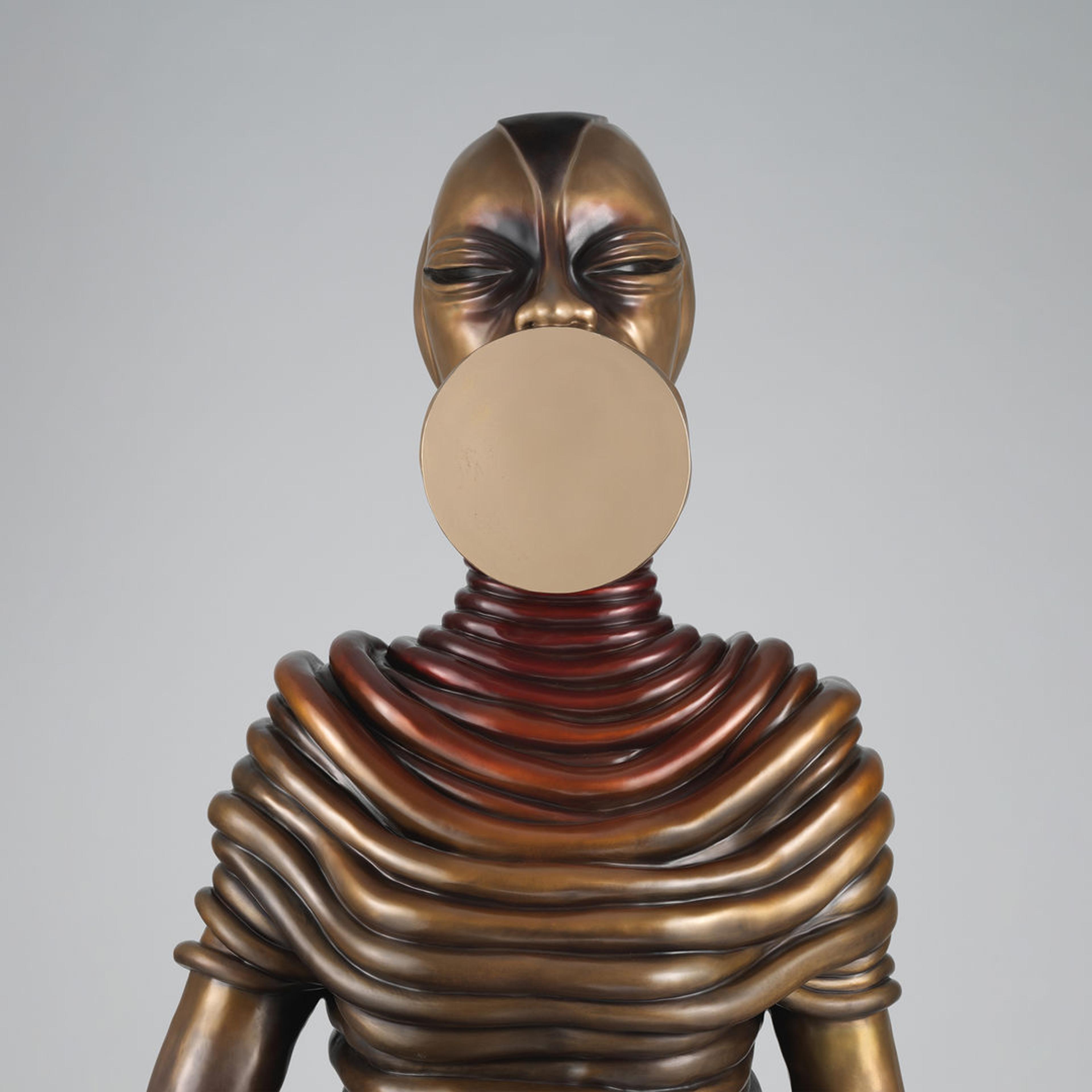In 2019, the Kenyan American artist Wangechi Mutu was invited to make sculptures for The Met’s inaugural facade commission.
In this episode, she describes how she began her process by examining the Museum’s Beaux-Arts architecture, focusing on a very curious type of architectural feature called caryatids. Met curator Brinda Kumar discusses the ways Mutu’s work both represents and subverts traditional structures and the narratives they upheld.
Museums Without Men: Wangechi Mutu
Listen to the conversation, or read the full transcript below.
Transcript
KATY HESSEL: In 2019, Kenyan American artist Wangechi Mutu was commissioned to create a series of sculptures for the historic facade of The Met. And as inspiration for her work, she looked at a very curious type of architectural structure called caryatids. Here’s Wangechi Mutu.
WANGECHI MUTU: So as far as I know, caryatids are these female figures that are, in a sense, columns that are anthropomorphized into a human being.
HESSEL: Like normal columns, these structures shaped like women served to literally hold up the weight of grand buildings throughout history—temples, government centers, palaces, museums.
MUTU: So the caryatids, for me, throughout history, have carried these buildings and these structures that men have built to express the might and the wealth of a particular place—an empire, a culture, a country.
I thought about these caryatids not just as objects, but really as people. Like this is a body that has been given such a deep responsibility to hold up these buildings and these empires. How are these women supposed to do that for the entire history of humanity?

Wangechi Mutu (Kenyan, b. 1972). The Seated I, 2019. Bronze, 79 1/8 x 33 1/2 x 44 1/2 in., 842 lb. (201 x 85.1 x 113 cm). Purchase, Hazen Polsky Foundation Fund and Cynthia Hazen Polsky Gift, in celebration of the Museum's 150th Anniversary, 2020 (2020.119). © Wangechi Mutu. Courtesy of the Artist and Gladstone Gallery, New York and Brussels
HESSEL: Drawing on that history, Wangechi Mutu created a series of bronze sculptures of female figures decorated with coils and discs inspired by traditions of African adornment and they were placed inside four empty niches on The Met’s facade. Not as supporting figures, but as independent agents—strong, on their own. Here’s curator Brinda Kumar.
BRINDA KUMAR: Rather than being in the service of a building that is meant to celebrate male greatness of some sort, Mutu I think is subverting that.
MUTU: I think of these women as characters that have the capacity, the freedom, and the opportunity to be where they need to be, to say what they have to say. And in that way, I still feel like they carry something important.
But they’re not tasked with carrying someone else’s shit, someone else’s things, someone else’s ideas.
HESSEL: For Mutu, seeing this work at an institution like The Met was an important moment.
MUTU: These institutions are us. You know, they represent who we are.
And for me, it’s also addressing and admitting that yes, we have to change up who we use to represent us as a museum, as a space that speaks to all of these different people who visit the city and the United States and this incredible museum.
KUMAR: For a long time, when you said the word artist, it meant a man. And when you said the word museum, it involved a certain kind of object. And what an artist like Wangechi Mutu is doing at the very outset of your experience at the Museum is really challenging those expectations. These four seated female figures, they became guardians, not just of the Museum, but in some ways for many of us.
MUTU: I also think there is something about the way figures impact us, you know? And we see ourselves, or we see others in figures, in art figures. And it makes you feel a particular way. And if you see yourself represented in that way, you really do feel like, okay, this means that I’m not only in this place, I’m allowed to speak on behalf of this place. Which I think is an important statement for The Met to allow artists to do, and also for them to put themselves in a position to say, “This is what we want at this moment.”
###
This audio tour is one in a series of tours called Museums Without Men produced by Katy Hessel in collaboration with institutions across the globe, such as the Fine Arts Museum San Francisco, the Hepworth Wakefield, the Hirshhorn Museum and Sculpture Garden, and Tate Britain. The series encourages museum visitors to seek out work by great women and gender non-conforming artists in these institutions who, simply by virtue of their gender, were often overlooked and underrepresented.
